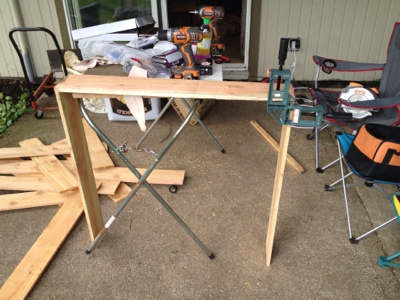Hey guys!
Brittany here. So today I wanted to tell you about the luck we had about finding some free gardening supplies online!
Jon had been talking about buying some pavers from Lowes, or Home Depot, so naturally we were preparing to fork over a bunch of money to be able to have the adequate amount. So before buying he had looked on Craigslist just in curiosity to see if we could find anything for cheaper or free, and luckily we found a posting by a person a couple towns over that had about 80 pavers for free because they had just remodeled their backyard! So being ecstatic, we jumped on the opportunity to save a dollar.
Although we had to travel about 25 miles to get them, it was well worth it. Some were in perfect condition and some were dirty but it doesn't matter if they are just going to get dirty once set on the ground.
Now that we had the pavers we got started on ways we could utilize them, first we used them to put under our cucumber and pea planters that we had built. Having more pavers than we knew what to do with them, we put them all around the garden but had noticed that grass was starting to grow between each of them.

The start of lying down the pavers in the garden. |
 |
We felt it looked rather sloppy to have it looking the way it did and so we decided to start over in a sense of design.
We removed the pavers from inside the garden and went to our local wood recycler (called H & H; we get some of our soil there. Great price and all organic.) While we were there we decided to pick up some pea gravel that they sell, also a great price $22, so we got a half yard.
Eager to get started, we put the pavers on the ground to create a perimeter and lied down landscape fabric in the areas we were going to put the pea gravel down.

After many back and forth trips from the truck bed to the garden, we finally had finished the design we had strived for to begin with.
Later we stacked the pavers by two high so the pea gravel would easily stay inside the area and not scattered everywhere in the yard.
Thanks for stopping by, PLEASE SUBSCRIBE! :)
-Brittany!



























